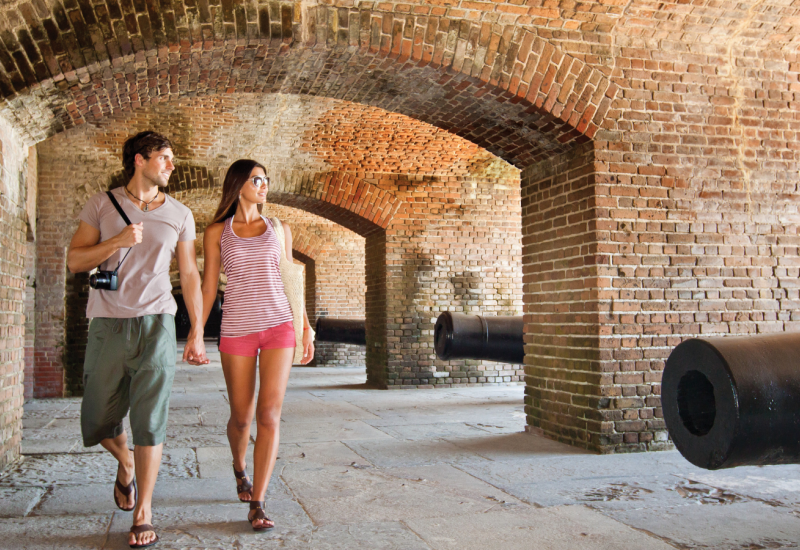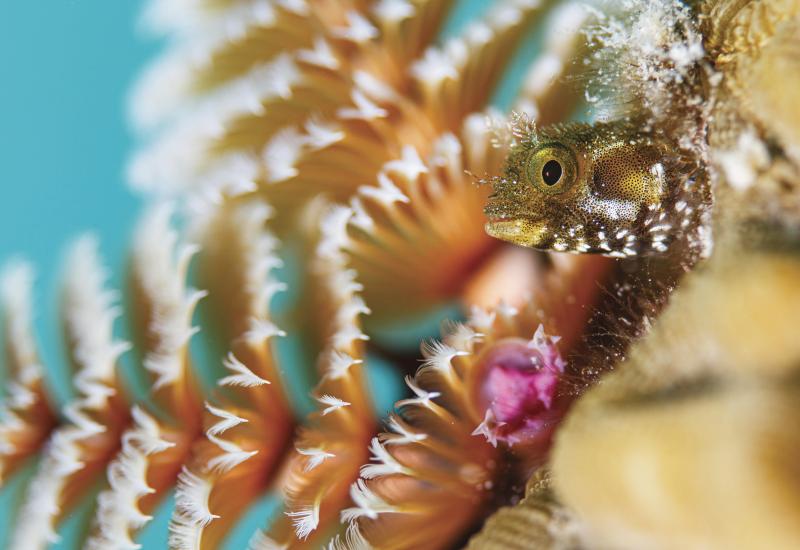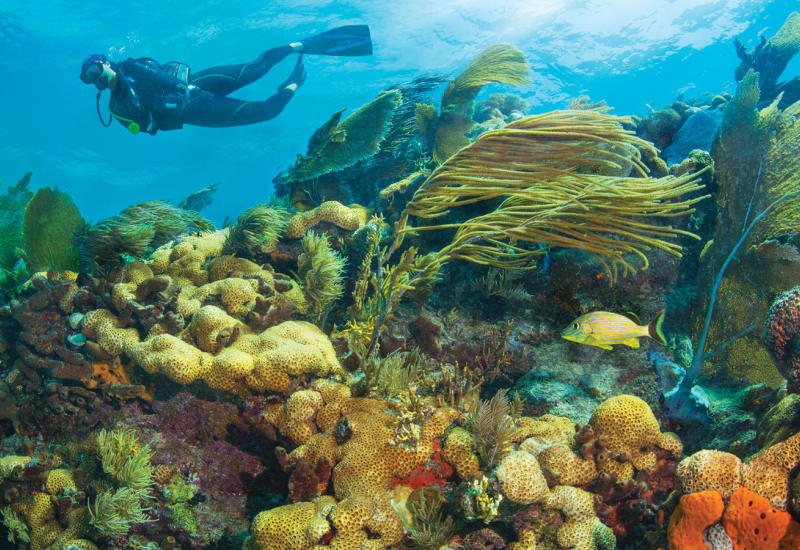Top 10 Destinations for Macro Diving

Top 10 Macro Diving Destinations
Ty Sawyer
Major Macro
Muck diving, critter diving, rubble diving – whatever you call it, fascinating varieties of marine life are found in a number of underwater habitats, from the pilings of old piers and the superstructure of sunken wrecks to the myriad tiny crevices in reefs and shallow flats off beaches. When divers go on the hunt for these creatures, what they often find looks like a scene shot inside Chalmun’s Cantina, the fictional bar in Star Wars that’s populated by a variety of funky-looking alien species. All divers need is a good eye for spotting marine life that can be as small as a baby’s pinky, disguised in clever camouflage or hiding in unlikely places – and of course, a good macro lens for your camera. The following 10 spots are sure-fire bets to discover the weird and the wonderful world of macro marine life.
1. Indonesia
We could create a Top 10 list of macro spots comprised of only Indonesian dive sites and only scratch the surface at what the archipelago has to offer. That’s because this vast island country in Southeast Asia is comprised of more than 17,000 islands with great diving found in every corner. Indonesia is a perennial winner in the macro animal category of Scuba Diving’s annual Top 100 Readers’ Choice Awards. Divers find unidentifiable marine life in the blue and on the reefs, but it’s what they discover “in the muck” that captures the interest of many, especially underwater photographers and marine biologists. Case in point: Lembeh Strait, which offers a number of sites on shallow, gently sloping back sand. On Hairball, probably the most popular of Lembeh’s macro sites, divers make both day and night dives looking for Ambon scorpionfish, mimic octopus, hairy frogfish and flamboyant cuttlefish. Other Indonesian places making a name for themselves among macro enthusiasts are Alyui Bay’s Cendana Pearl Farm Pier in Raja Ampat, Banda Islands, Bunaken Island and Sangeang Island, which is near Komodo.
2. Philippines

Scuba Diving’s Editor, David Espinosa, didn’t miss a beat when asked to name his favorite macro destination in the Philippines — Anilao, hands down. Like Indonesia, the Philippines show up perennially on Scuba Diving’s annual Top 100 Readers’ Choice Awards in the macro category. Anilao is a popular weekend getaway of local divers because it’s only a two-and-a-half hour drive from the country’s capital city, Manila. Creatures like gaudy nudibranchs, mimic and wunderpus octopuses, harlequin shrimp and ghost pipefish are found in abundance at Anilao sites, such as the marine sanctuary Cathedral Rock, Layag-Layag, Beatrice Rock, Basura and the no-longer unknown site, Secret Bay, which is a favorite night-diving spot.
3. St. Vincent
Underwater photographer Clay Wiseman tipped us off to the amazing macro diving in this chain at the southern end of the Caribbean’s Windward Islands. That’s because the underwater landscape is perfect for reclusive animals who like to hide or who dress up in camouflage. Off St. Vincent, in the shallow, sandy areas between the island’s headlands and the sponge-covered reef slopes offshore, you can find spotted spoon-nose eels, octopuses and box crabs. Even tinier stuff like golden coral shrimp, fingernail-sized crabs, blennies and longsnout seahorses are harder to find, but patient divers with sharp eyes usually are rewarded. Check out depressions in boulders and rocks, small fissures in the reef and amongst the rubble found on shallow sand flats off the shore.
4. Dominica
Like many divers, we love this Eastern Caribbean island for its stunning underwater volcanic formations and whale encounters, but if you take your time on the reef or in the sand flats and coral rubble just off the beach, you’ll find hard-to-spot macro creatures, many of which are rare and elusive because of their propensity for hiding — including shortnose batfish with their unicorn-like projections and speckled bandtail puffers. Dominica’s entire western coast, at sites like Swiss Cheese off the southwest coast, Pole to Pole off Cabrits in the northwest, and Castaways Reef in the mid-coastal region off Salisbury, is ideal for spotting the tiny creatures macro photographers love.
5. Bonaire
Spending time underwater with Scuba Diving contributors Ned and Anna DeLoach is like being in a watery classroom – complete with report cards. That’s because these highly respected and popular marine life writers, photographers, videographers and educators have devoted their lives to documenting marine life creatures and behavior — and they like when the divers with them take notes too. We’ve dived often with the DeLoaches in Bonaire, and benefitted not only from their expertise in finding camouflaged creatures like longlure frogfish but from their knowledge in what the fish are doing. Look for tiny seahorses hugging searods and pier pilings and cleaner shrimp on purple-tipped anemones. Get close to the Hilma Hooker, and you might spot male sergeant majors fiercely guarding their purple egg patches. Best of all, the shore diving is easy on Bonaire, and especially convenient at dive resort house reefs, like Buddy, Bari, Calabas, La Machacha and Front Porch.
6. Southeast Florida, USA

Another favorite site of the DeLoaches is Blue Heron Bridge off West Palm, Florida. Striated frogfish and bandtail searobins are camouflaged on the shallow bottom (as a friend of mine once joked, you’d need a shovel to get deeper than 12 feet). Exotic macro critters abound here — on our most recent dive there, we spotted octopuses, a peacock flounder and a ton of pincushion starfish. A prime spot for seeing frogfish is along the mooring ball lines of sailboats that are berthed near the small beach. This isn’t the only site along Florida’s southeast Atlantic coast to spot a universe of macro stuff. South Florida’s Gold Coast — Palm Beach, Broward and Dade counties — stretches from Jupiter in the north to Biscayne Bay in the south. Though most divers come for bigger fish and deeper diving, other sites like the wreck of the Ancient Mariner off Deerfield Beach offer good macro opportunities.
7. Papua New Guinea
If some destinations are just getting attention from macro photographers, Papua New Guinea is recognized as one of the birthplaces of muck diving. And Milne Bay is PNG’s muck-diving capital. Living in the debris scattered on the seafloor off Observation Point on Normandy Island, at the mouth of a small channel in Milne Bay are flamboyant cuttlefish, stargazers, decorator crabs and banded cleaner shrimp, and on the reeftop are weedy scorpionfish and ghost pipefish. The bay is home to Samarai Island, a center of commerce in the early 1900s. Today, its wharf no longer serves as a port, but it is immensely popular with divers who drop down on its pilings to photograph yellow tubastraea corals, tens of thousands of baitfish, batfish, convictfish, catfish and angelfish. Underwater photographers have been known to camp here for days. On the Solomon Sea side of the peninsula that juts out into Milne Bay on its northern end, are two sites that put PNG on the map years ago: Dinah’s Beach and Deacon’s Reef.
8. Curaçao
Our team has spent a lot of time on this Eastern Caribbean island — and photographing its many small treasures at sites like Porto Mari, Watamula, Playa Kalki. This triple-reef dive site offers a number of profiles, depending on where you head, but macro photographers like the crevice between the first and second reefs where they can get up close to some nice sponges, sea rods and star corals that make photogenic backdrops for the creatures that shelter here — moray eels, peppermint gobies, feather duster worms, flamingo tongues, cleaner shrimp and blennies. If you time your visit right, after the full moons in September and October, Curacao dive operators offer coral-spawning night dives. The events are not guaranteed, but if it happens, you’ll want your camera.
9. Utila, Bay Islands
It may not carry the same name recognition as some of the legendary destinations in the Caribbean, but three-mile-long Utila delivers major-league underwater experiences that range from whale shark sightings in its deeper waters to long bottom times on shallow, sun-dappled coral gardens. You could plan a trip here and have your heart set on at least one whale shark encounter, but as a number of our staff can attest, you won’t be disappointed when the world’s biggest fish fails to show up at the party. That’s because there is so much that you’re guaranteed to see, including turtles, rays and interesting formations carved into the drop-offs. If macro’s your thing, you can photograph blennies, bluebell tunicates and crabs hiding in reef crevices at sites like Don Quickset, off the island’s northwest shore, and Little Bight, west of Laguna Beach on Utila’s south side.
10. British Columbia, Canada
Sure, it’s cold. Yeah, it’s got strong currents and ripping tidal changes. Nope, it’s not for every diver. BC divers prefer it that way, and the images photographers take here are stunning. Small animals that find the northwest Pacific perfectly cozy are as beautiful as they are hardy. Brilliant orange, purple, yellow and red sea stars, hydroids, giant barnacles and encrusting sponges carpet the bottom of current-swept Sechelt Rapids, off the Sunshine Coast in southern B.C. Sechelt’s waters support suspension feeders, too, like dahlia sea anemones. Race Rocks, off the southern tip of Vancouver Island, support shallow forests of bull kelp, where juvenile rockfishes and grazing sea urchins shelter.
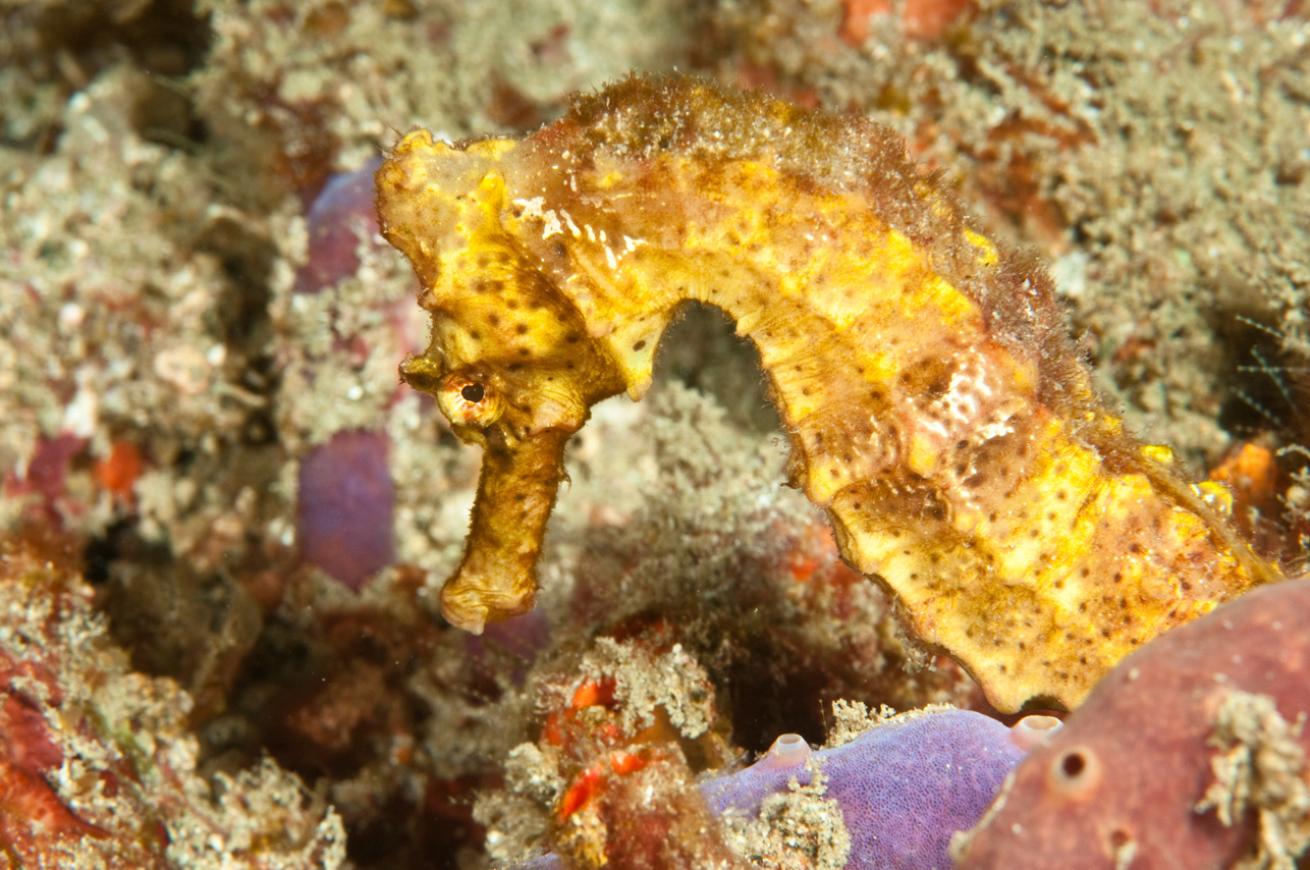
Ty Sawyer
Major Macro
Muck diving, critter diving, rubble diving – whatever you call it, fascinating varieties of marine life are found in a number of underwater habitats, from the pilings of old piers and the superstructure of sunken wrecks to the myriad tiny crevices in reefs and shallow flats off beaches. When divers go on the hunt for these creatures, what they often find looks like a scene shot inside Chalmun’s Cantina, the fictional bar in Star Wars that’s populated by a variety of funky-looking alien species. All divers need is a good eye for spotting marine life that can be as small as a baby’s pinky, disguised in clever camouflage or hiding in unlikely places – and of course, a good macro lens for your camera. The following 10 spots are sure-fire bets to discover the weird and the wonderful world of macro marine life.
1. Indonesia
We could create a Top 10 list of macro spots comprised of only Indonesian dive sites and only scratch the surface at what the archipelago has to offer. That’s because this vast island country in Southeast Asia is comprised of more than 17,000 islands with great diving found in every corner. Indonesia is a perennial winner in the macro animal category of Scuba Diving’s annual Top 100 Readers’ Choice Awards. Divers find unidentifiable marine life in the blue and on the reefs, but it’s what they discover “in the muck” that captures the interest of many, especially underwater photographers and marine biologists. Case in point: Lembeh Strait, which offers a number of sites on shallow, gently sloping back sand. On Hairball, probably the most popular of Lembeh’s macro sites, divers make both day and night dives looking for Ambon scorpionfish, mimic octopus, hairy frogfish and flamboyant cuttlefish. Other Indonesian places making a name for themselves among macro enthusiasts are Alyui Bay’s Cendana Pearl Farm Pier in Raja Ampat, Banda Islands, Bunaken Island and Sangeang Island, which is near Komodo.
2. Philippines
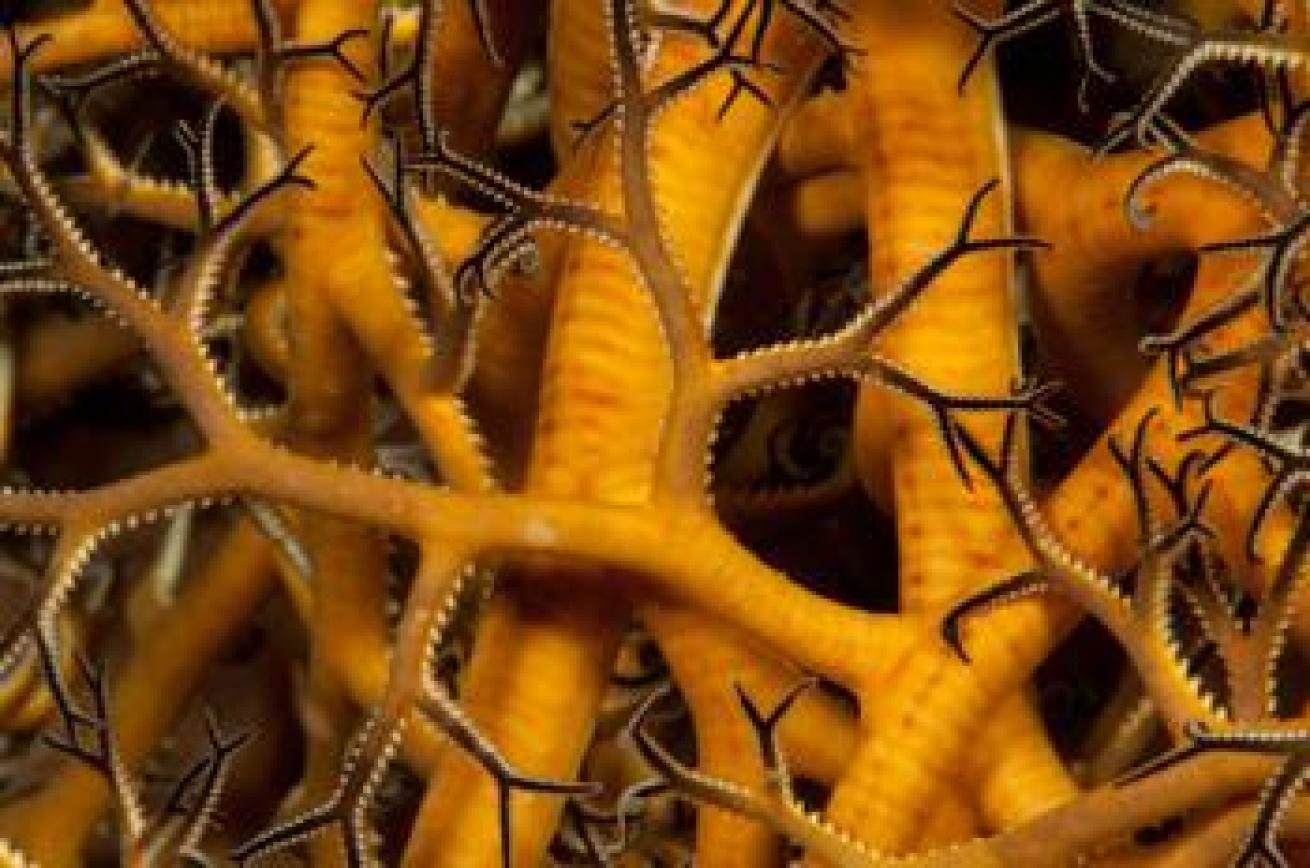
Scuba Diving’s Editor, David Espinosa, didn’t miss a beat when asked to name his favorite macro destination in the Philippines — Anilao, hands down. Like Indonesia, the Philippines show up perennially on Scuba Diving’s annual Top 100 Readers’ Choice Awards in the macro category. Anilao is a popular weekend getaway of local divers because it’s only a two-and-a-half hour drive from the country’s capital city, Manila. Creatures like gaudy nudibranchs, mimic and wunderpus octopuses, harlequin shrimp and ghost pipefish are found in abundance at Anilao sites, such as the marine sanctuary Cathedral Rock, Layag-Layag, Beatrice Rock, Basura and the no-longer unknown site, Secret Bay, which is a favorite night-diving spot.
3. St. Vincent
Underwater photographer Clay Wiseman tipped us off to the amazing macro diving in this chain at the southern end of the Caribbean’s Windward Islands. That’s because the underwater landscape is perfect for reclusive animals who like to hide or who dress up in camouflage. Off St. Vincent, in the shallow, sandy areas between the island’s headlands and the sponge-covered reef slopes offshore, you can find spotted spoon-nose eels, octopuses and box crabs. Even tinier stuff like golden coral shrimp, fingernail-sized crabs, blennies and longsnout seahorses are harder to find, but patient divers with sharp eyes usually are rewarded. Check out depressions in boulders and rocks, small fissures in the reef and amongst the rubble found on shallow sand flats off the shore.
4. Dominica
Like many divers, we love this Eastern Caribbean island for its stunning underwater volcanic formations and whale encounters, but if you take your time on the reef or in the sand flats and coral rubble just off the beach, you’ll find hard-to-spot macro creatures, many of which are rare and elusive because of their propensity for hiding — including shortnose batfish with their unicorn-like projections and speckled bandtail puffers. Dominica’s entire western coast, at sites like Swiss Cheese off the southwest coast, Pole to Pole off Cabrits in the northwest, and Castaways Reef in the mid-coastal region off Salisbury, is ideal for spotting the tiny creatures macro photographers love.
5. Bonaire
Spending time underwater with Scuba Diving contributors Ned and Anna DeLoach is like being in a watery classroom – complete with report cards. That’s because these highly respected and popular marine life writers, photographers, videographers and educators have devoted their lives to documenting marine life creatures and behavior — and they like when the divers with them take notes too. We’ve dived often with the DeLoaches in Bonaire, and benefitted not only from their expertise in finding camouflaged creatures like longlure frogfish but from their knowledge in what the fish are doing. Look for tiny seahorses hugging searods and pier pilings and cleaner shrimp on purple-tipped anemones. Get close to the Hilma Hooker, and you might spot male sergeant majors fiercely guarding their purple egg patches. Best of all, the shore diving is easy on Bonaire, and especially convenient at dive resort house reefs, like Buddy, Bari, Calabas, La Machacha and Front Porch.
6. Southeast Florida, USA
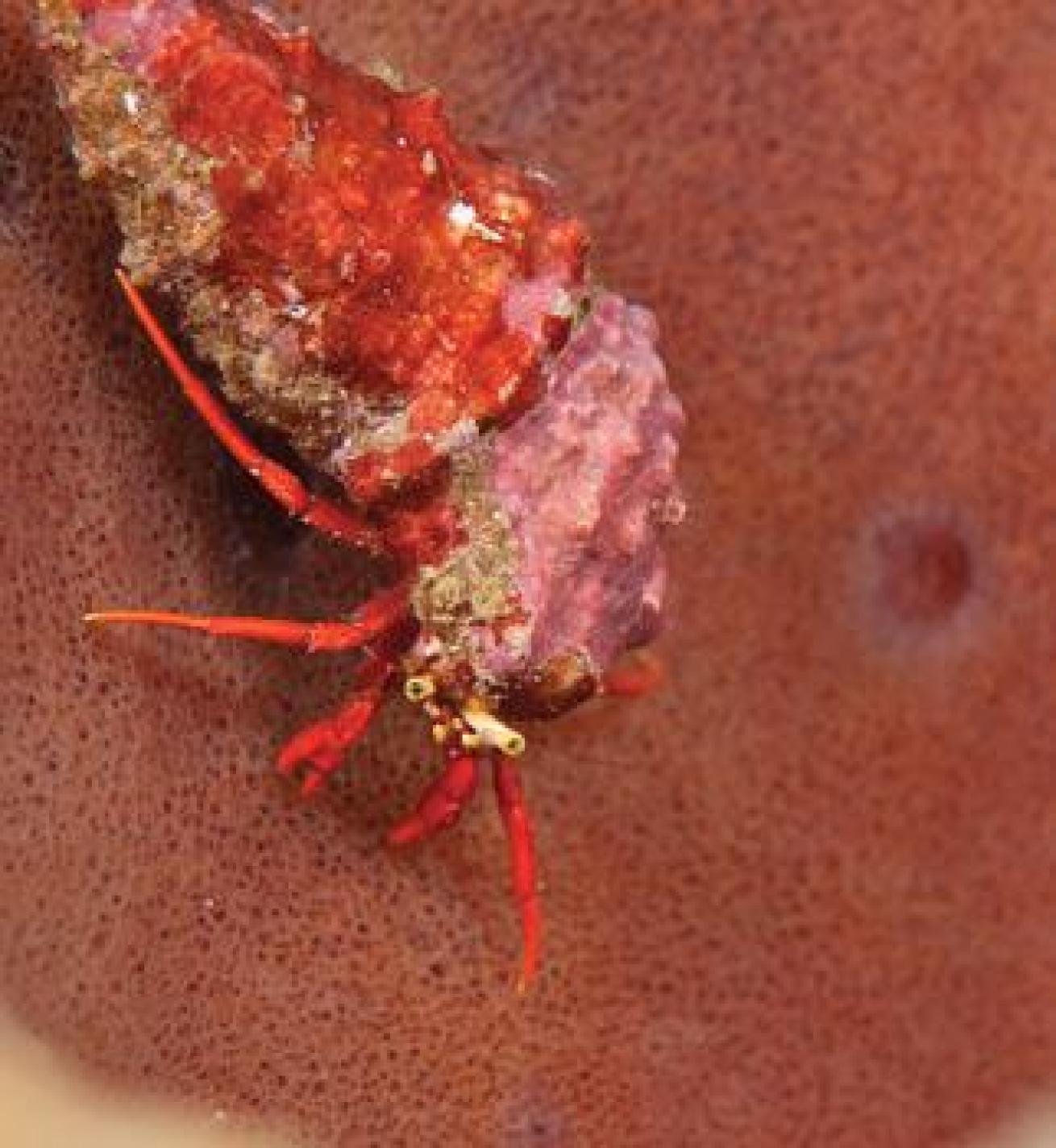
Another favorite site of the DeLoaches is Blue Heron Bridge off West Palm, Florida. Striated frogfish and bandtail searobins are camouflaged on the shallow bottom (as a friend of mine once joked, you’d need a shovel to get deeper than 12 feet). Exotic macro critters abound here — on our most recent dive there, we spotted octopuses, a peacock flounder and a ton of pincushion starfish. A prime spot for seeing frogfish is along the mooring ball lines of sailboats that are berthed near the small beach. This isn’t the only site along Florida’s southeast Atlantic coast to spot a universe of macro stuff. South Florida’s Gold Coast — Palm Beach, Broward and Dade counties — stretches from Jupiter in the north to Biscayne Bay in the south. Though most divers come for bigger fish and deeper diving, other sites like the wreck of the Ancient Mariner off Deerfield Beach offer good macro opportunities.
7. Papua New Guinea
If some destinations are just getting attention from macro photographers, Papua New Guinea is recognized as one of the birthplaces of muck diving. And Milne Bay is PNG’s muck-diving capital. Living in the debris scattered on the seafloor off Observation Point on Normandy Island, at the mouth of a small channel in Milne Bay are flamboyant cuttlefish, stargazers, decorator crabs and banded cleaner shrimp, and on the reeftop are weedy scorpionfish and ghost pipefish. The bay is home to Samarai Island, a center of commerce in the early 1900s. Today, its wharf no longer serves as a port, but it is immensely popular with divers who drop down on its pilings to photograph yellow tubastraea corals, tens of thousands of baitfish, batfish, convictfish, catfish and angelfish. Underwater photographers have been known to camp here for days. On the Solomon Sea side of the peninsula that juts out into Milne Bay on its northern end, are two sites that put PNG on the map years ago: Dinah’s Beach and Deacon’s Reef.
8. Curaçao
Our team has spent a lot of time on this Eastern Caribbean island — and photographing its many small treasures at sites like Porto Mari, Watamula, Playa Kalki. This triple-reef dive site offers a number of profiles, depending on where you head, but macro photographers like the crevice between the first and second reefs where they can get up close to some nice sponges, sea rods and star corals that make photogenic backdrops for the creatures that shelter here — moray eels, peppermint gobies, feather duster worms, flamingo tongues, cleaner shrimp and blennies. If you time your visit right, after the full moons in September and October, Curacao dive operators offer coral-spawning night dives. The events are not guaranteed, but if it happens, you’ll want your camera.
9. Utila, Bay Islands
It may not carry the same name recognition as some of the legendary destinations in the Caribbean, but three-mile-long Utila delivers major-league underwater experiences that range from whale shark sightings in its deeper waters to long bottom times on shallow, sun-dappled coral gardens. You could plan a trip here and have your heart set on at least one whale shark encounter, but as a number of our staff can attest, you won’t be disappointed when the world’s biggest fish fails to show up at the party. That’s because there is so much that you’re guaranteed to see, including turtles, rays and interesting formations carved into the drop-offs. If macro’s your thing, you can photograph blennies, bluebell tunicates and crabs hiding in reef crevices at sites like Don Quickset, off the island’s northwest shore, and Little Bight, west of Laguna Beach on Utila’s south side.
10. British Columbia, Canada
Sure, it’s cold. Yeah, it’s got strong currents and ripping tidal changes. Nope, it’s not for every diver. BC divers prefer it that way, and the images photographers take here are stunning. Small animals that find the northwest Pacific perfectly cozy are as beautiful as they are hardy. Brilliant orange, purple, yellow and red sea stars, hydroids, giant barnacles and encrusting sponges carpet the bottom of current-swept Sechelt Rapids, off the Sunshine Coast in southern B.C. Sechelt’s waters support suspension feeders, too, like dahlia sea anemones. Race Rocks, off the southern tip of Vancouver Island, support shallow forests of bull kelp, where juvenile rockfishes and grazing sea urchins shelter.


